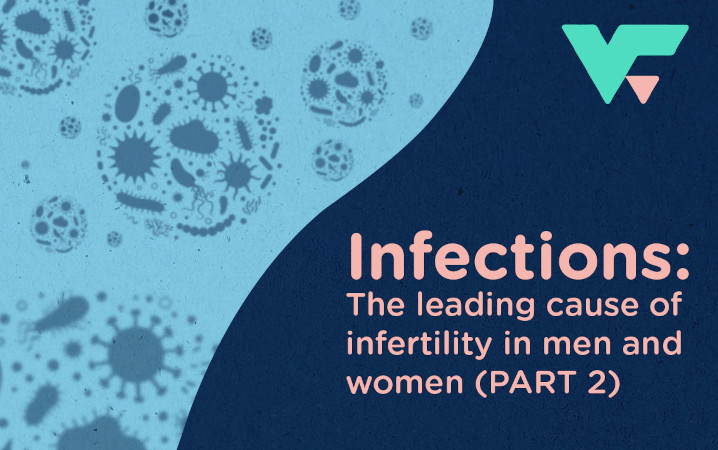- No Comments
Infections: The Leading Cause of Infertility in Men and Women (PART 2)
In our last edition on this topic, we discussed infections that could cause infertility in men. Let us proceed as we discuss infection, as the leading cause of infertility in women. Ready? Let’s go.
Infertility resulting from infections in women includes:
Pelvic Inflammatory Disease (PID)
The most common cause of infertility in women is a pelvic inflammatory disease (PID). The same bacterium that causes gonorrhea and chlamydia is also known to be responsible for PID.
This disease is an infection of the pelvis or one or more of the reproductive organs, including the ovaries, cervix, uterus, and fallopian tube.
When Pelvic inflammatory disease is not treated early enough, it can cause a condition in which the eggs and sperm are prevented from meeting due to blockage in the fallopian tube. This condition is referred to as tubal-factor infertility.
A Urinary Tract Infection (UTI)
Urinary tract infection is common in women because they have a shorter urinary tract. A UTI might affect organs such as the kidney, bladder, uterus, etc. Frequent experience of urinary tract infections may result in infertility such that it may become difficult to conceive due to associated pelvic inflammation, which can cause a scar in the fallopian tubes. It can also affect the ovulation process.
Bacterial Vaginosis and Yeast Infection
Bacterial vaginosis and yeast infection are well known amongst women. It can cause an imbalance in the internal vaginal flora, making it difficult for the sperm to reach the uterus. Thus, promoting infertility
Pelvic Tuberculosis
Tuberculosis has the capacity to extend to other body parts, such as the uterus and fallopian tubes. When this happens, the condition is known as pelvic tuberculosis. Pelvic tuberculosis hinders fertility. This is because of problems in the fallopian tubes. PID has complex signs and symptoms resulting from the spread of pathogenic microorganisms from the vagina and endocervix to the uterus, body of the endometrium, and fallopian tubes.
Human Papillomavirus Infection
Human papillomavirus infection is also a sexually transmitted disease that affects the epithelial cells of the oral or genital mucous membranes, including other parts of the skin.
Conclusion
Fortunately, as much as infertility can be cured, infections causing infertility can also be treated. The best prevention is to notice and treat early-stage asymptomatic and symptomatic infections. This can be achieved by screening all sexually active reproductive-age women and by educating clinicians and patients on the importance of this testing.
Prevention of pelvic infections should be highly prioritized. In today’s world, certain treatment possibilities, such as tubal microsurgery and assisted reproductive technologies offer couples reproductive choices even when infertility occurs as the result of an earlier pelvic infection.
A woman who has had unprotected sexual intercourse with a new partner risks compromising her future fertility, and this also applies to men.
In some cases, surgical intervention is necessary for the immediate treatment of any infection.
Source: Novaivffertility
Do you have further questions on infertility, signs and symptoms of infertility, as well as treatment of infertility? We are here to help you.
The cultural stigma of a delay in conception can lead to several health issues. WellFert creates a safe space that helps minimize this stigma by sharing different experiences, facts, and solutions that will aid in your conception journey.
Contact us at wellfert.com. You can also take our free female fertility test, as well as book a consultation with our professionals. Visit our website: You can also send a mail to ask@wellfert.com.
Do not forget to follow our social media pages @wellfert on Facebook, Instagram, Twitter, and LinkedIn.


Leave A Comment